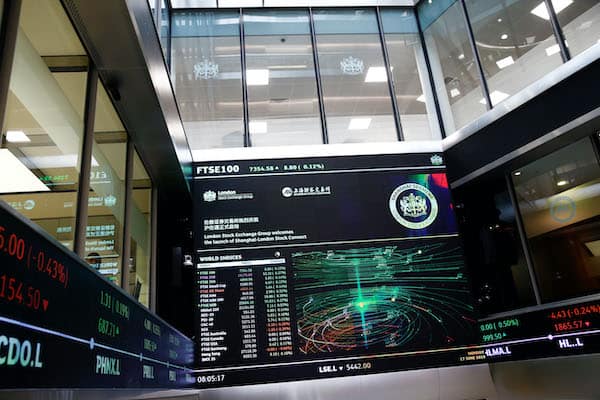Bussiness
Which financial markets to focus on in May

What lies ahead in May? Let me highlight three areas.
First, in recent weeks the weakness of the yen has become a central focus for financial markets.
The yen at one stage weakened through ¥:$ 160 (160 yen to the US dollar), prompting intervention by the Bank of Japan (BOJ). Last Monday it is conjectured that BOJ intervention totalled ¥5.5 trillion of purchases.
It has been some time since their previous intervention – three occasions in September and October 2022, totalling ¥9.1 trillion. The yen had then breached ¥:$ 150, triggering action, and it then rallied to below ¥:$ 130 by early last year. Since then, though, the yen has weakened steadily and continuously. We have considered the potential for further weakness, yet the market has appeared to be taken by surprise.
A key factor is whether the underlying capital flows that have contributed to the yen’s weakness to date will continue. It is ironic that when Kuroda took over as the previous BOJ governor a dozen years ago, he would cite a weaker yen as a necessity, and one of his last acts was to oversee that intervention in 2022.
His successor Ueda has been more circumspect. Yet under him a weaker yen appears to support an aim for higher inflation and stronger growth, and in turn he hopes this will trigger higher nominal GDP that will see the debt ratio improve gradually. Deflation fears have been replaced by expectations of low inflation, something Kuroda had been seeking to achieve.
Intervention can often provide only a temporary respite when a currency is depreciating – but this bout of yen weakness is far more subtle. It is difficult to say currently where fair value is for the yen. Even though growth is picking up, the future trend rate of growth is low. And despite interest rates rising, they are doing so very gradually and the interest rate differential with the US is large.
The carry trade (borrowing in yen to invest elsewhere) may be a factor behind the yen’s weakness but if so then successful intervention could be important in limiting the scale of that. More profound is the scale of longer-term flows and what will happen to them. In May the market will focus on what the BOJ does next and how effective it might be. A temporary respite is possible, in a weaker trend.
Second, disinflationary pressures may be more evident in western economies in forthcoming data. There is a need to differentiate between Western Europe, including the UK, and the US. Growth is picking up gradually in the UK and the euro area. In contrast, the US has been far stronger. There is still some uncertainty as to how much previous monetary policy tightening will slow the US and UK.
The market expectation is that inflationary pressures will ease and a rate cut by the ECB is already factored in for June.
I still think there is a strong possibility the Bank of England can cut rates in June but the conflicting comments from its different Monetary Policy Committee members suggests this is not clear-cut. While headline inflation is expected to decelerate sharply in coming months, the MPC needs to see both service sector inflation and, in turn, core inflation ease.
A third focus is that the month will be topped and tailed by two important multilateral development banks (MDBs) meetings. The Asian Development Bank kicks off the month visiting Tbilisi, Georgia for the first time for its annual meeting. A range of topics are on the agenda, including towards climate friendly globalisation and the implications for Asia.
In turn, the annual meeting of the African Development Bank in Nairobi will conclude the month. This year’s theme is “Africa’s Transformation, the African Development Bank Group, and the Reform of the Global Financial Architecture.”
The increasing importance of MDBs to address global challenges does not receive the full attention and support that it should. There is a need for practical political solutions to fill the financing gap, particularly with so many low-income countries already in financial distress.
A report earlier this year (‘The role of MDBs in closing the climate and energy transition finance gap’) from The Climate and Energy Transition Finance Project Team of the Bretton Woods Committee – of which I am a member – is already rising to the challenge in the area of climate change. We outlined practical and politically acceptable steps centred on MDBs that could make a material difference in climate finance.
For example, one recommendation was to enhance the existing framework with a new Climate Action Accelerator within the World Bank Group to dramatically increase the scale, speed, and impact of climate financing. Another was to expand MDB risk sharing arrangements with the private financial sector.
Importantly, MDBs can already achieve much within the existing framework. But as our report concluded, the role of MDBs will need to continuously evolve as the climate threat itself evolves. They can and will need to work much more closely with their client countries, other financial institutions and organisations and, most critically, the private sector.










